The 2023 Toyota Sequoia TRD Pro ought to be a massive improvement over the previous-gen model in every single way. Unfortunately, just like the regular versions of the Sequoia, the off-road-focused TRD Pro embodies the same “few steps forward, few steps back” theme.
On the positive side, the Sequoia TRD Pro looks rad, particularly in this extremely orange Solar Octane paint. Designers gave it a unique grille with “TOYOTA” spelled out in big letters, and the TRD Pro hood trim stands out as a strong contrasting accent. Standing out even stronger in the dark are the bright lower fog lights and grille-mounted light bar that should confidently light up a trail at night — just don’t be an idiot and run it on the road. The big body cladding, rock rails, 18-inch forged BBS wheels that wear 33-inch Falken Wildpeak all-terrain tires and a big ‘ole roof carrier system really complete the look. One glance at the enormous SUV will have you thinking it’d be an ideal overlanding companion — its size and off-road capabilities make it a solid candidate for a rig that might spend days at a time off the grid. Of course, the mechanicals underneath and tech within the Sequoia TRD Pro is designed to ensure it’s up to the task for such ventures.
The Sequoia’s standard dampers get swapped out for TRD-tuned Fox internal bypass shocks, and ground clearance increases to 9.1 inches, which is half an inch more than the regular Sequoia. A TRD Pro front stabilizer bar is added, and a quarter-inch aluminum front skid plate keeps the underbody safe. The approach angle is greatly improved to 23 degrees versus a regular Sequoia’s 15, while the departure angle remains the same at 20 degrees. Plus, off-road technologies like downhill assist control, Toyota’s Crawl control and its Multi-Terrain Select system come standard. So does four-wheel drive and a selectable locking rear differential. Assuming the hybrid powertrain’s engine is running, you’ll be able to hear the Sequoia breathe through a TRD Pro-specific exhaust, too.
That new hybrid powertrain is a real bright spot for the Sequoia TRD Pro, too, assuming you’re buying it for things other than efficiency. On paper, the new model is substantially more efficient with a 20 mpg combined rating versus the 14 mpg combined the previous version managed. However, in practice, we could barely get the computer to register over 14 mpg in normal driving, which is in keeping with other Sequoias we’ve driven in both Michigan and California. When we stopped trying to drive efficiently, fuel economy dipped all the way down to 11 mpg over a long, around-town stint. Those figures aren’t anywhere close to even the 19 mpg city this SUV is rated for, and is far worse than the 18.5 mpg we managed with the gas-only, 440-hp Ford Expedition Timberline (18 mpg EPA combined). So, unless you creep around like a tortoise in the Sequoia, we have a feeling you’ll struggle to get anywhere close to the rated figures.
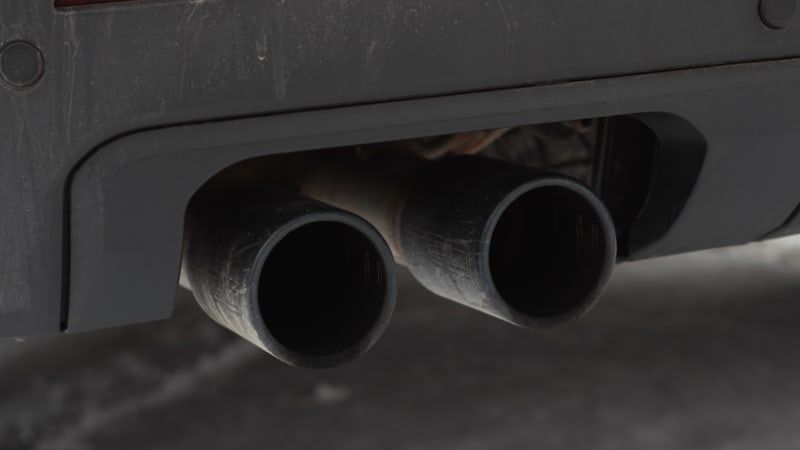
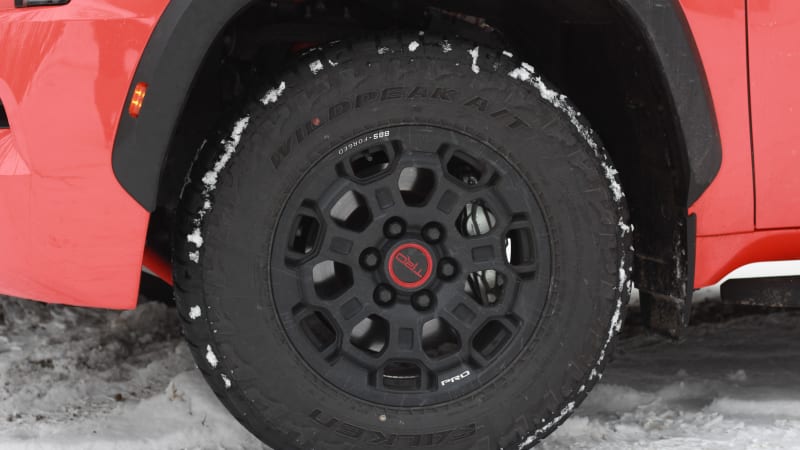
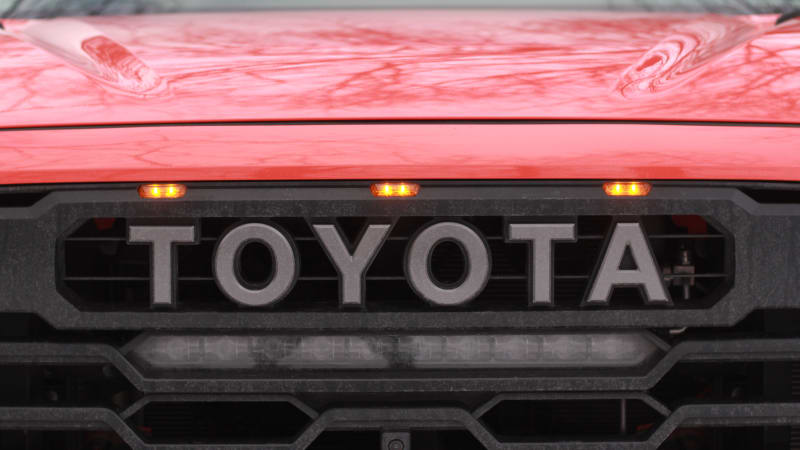
The engine and exhaust note make driving efficiently a tough thing to do, too, as it’s quite the stout-feeling and-sounding powertrain. Between the 3.5-liter twin-turbo V6 and electric motor, the Sequoia TRD Pro puts out a combined 437 horsepower and 583 pound-feet of torque. This big truck may weigh 6,150 pounds, but it feels quick off the line. The seamless blend of electric torque, boosted V6 and silky-shifting 10-speed is perhaps more impressive than the speed itself. Just lean into the throttle, and the Sequoia accelerates effortlessly with a growl from the exhaust that sounds more V8 than V6. There’s no doubt that some of that TRD Pro exhaust’s noise reaches the cabin, but just like the Tundra, there’s a good amount of augmented noise being pumped in over the speakers. It’s all rather convincing and presents well for an off-road-oriented SUV.
Unfortunately, the lovely engine is not backed up by a lovely ride. The previous Sequoia TRD Pro handled Michigan’s torn up roads like a champ, and while some of the credit is due to those off-road shocks, its independent rear suspension was a better place to start from. Toyota reverted to a solid rear axle design for this generation of Sequoia, and every one of our editors noticed. Just not in a good way. The Capstone model with its 23-inch wheels gave Senior Editor James Riswick an unpleasant, constantly jittery experience on California highways. Meanwhile, News Editor Joel Stocksdale noted while driving this test vehicle that the TRD Pro wasn’t notably better than the other trim levels he drove on the first drive despite the meatier all-terrain tires and Fox shocks that could have potentially resulted in a better ride.
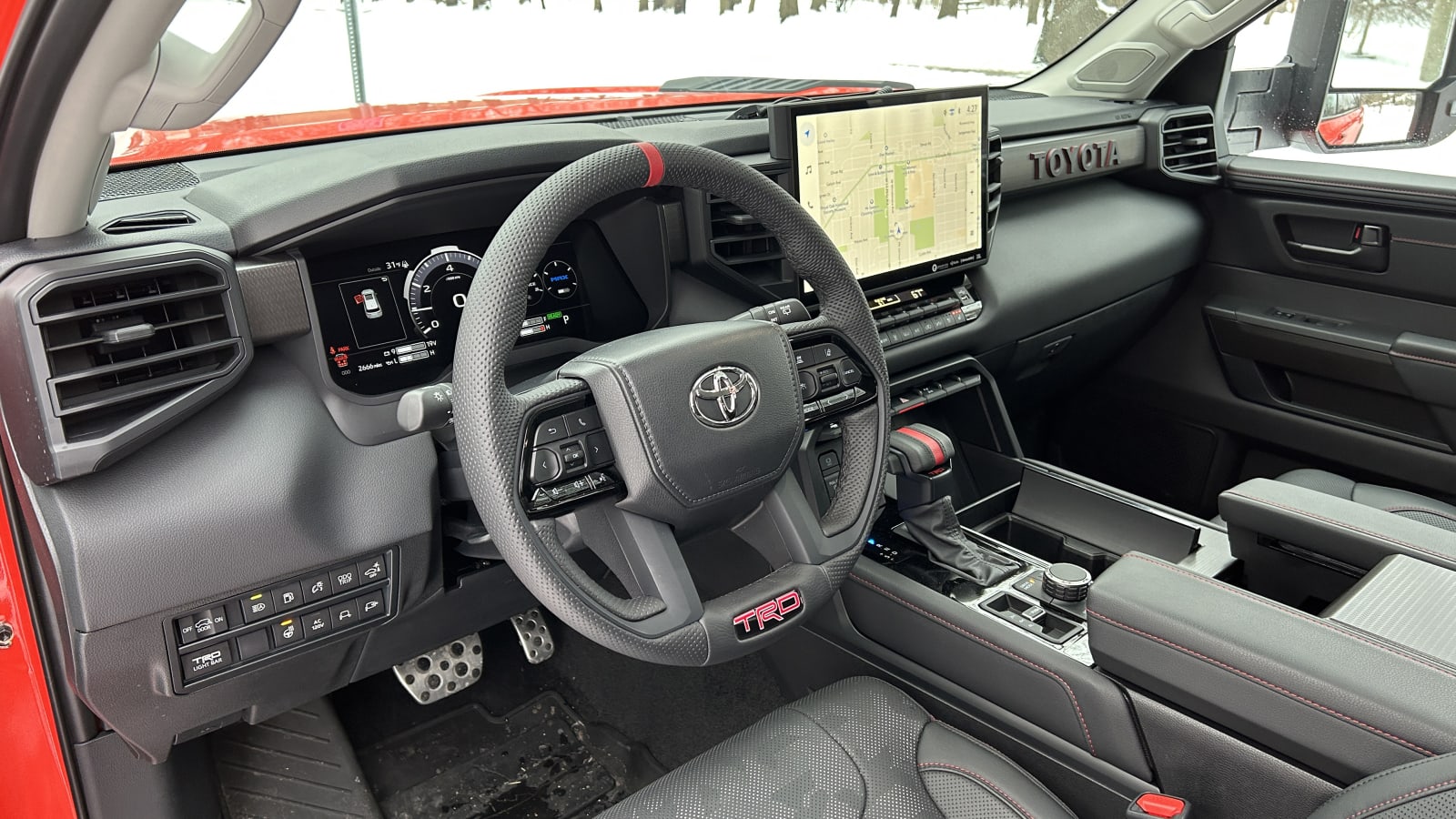
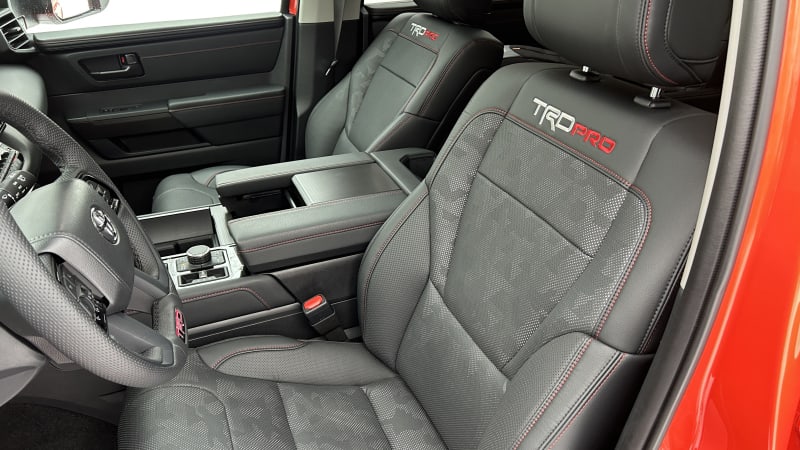
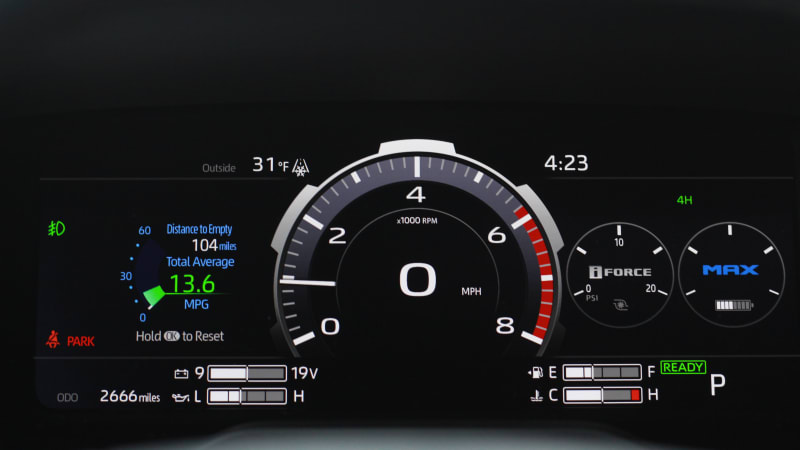
Whether it was on highway expansion joints or pothole-ridden surface streets, the Sequoia lacks the refinement and comfort you’d expect for its size. The ride problem for Toyota is exacerbated even further by how plush the Sequoia’s American rivals are – even GM’s off-road-focused Yukon AT4 and Tahoe Z71 are significantly more pleasant. The reason? They all have independent rear suspensions.
That’s not the end of the solid rear axle’s troubles: It leads to questionable packaging for the third row and cargo area. A picture works better than an explanation for why this setup is so silly, so direct your eyes below.
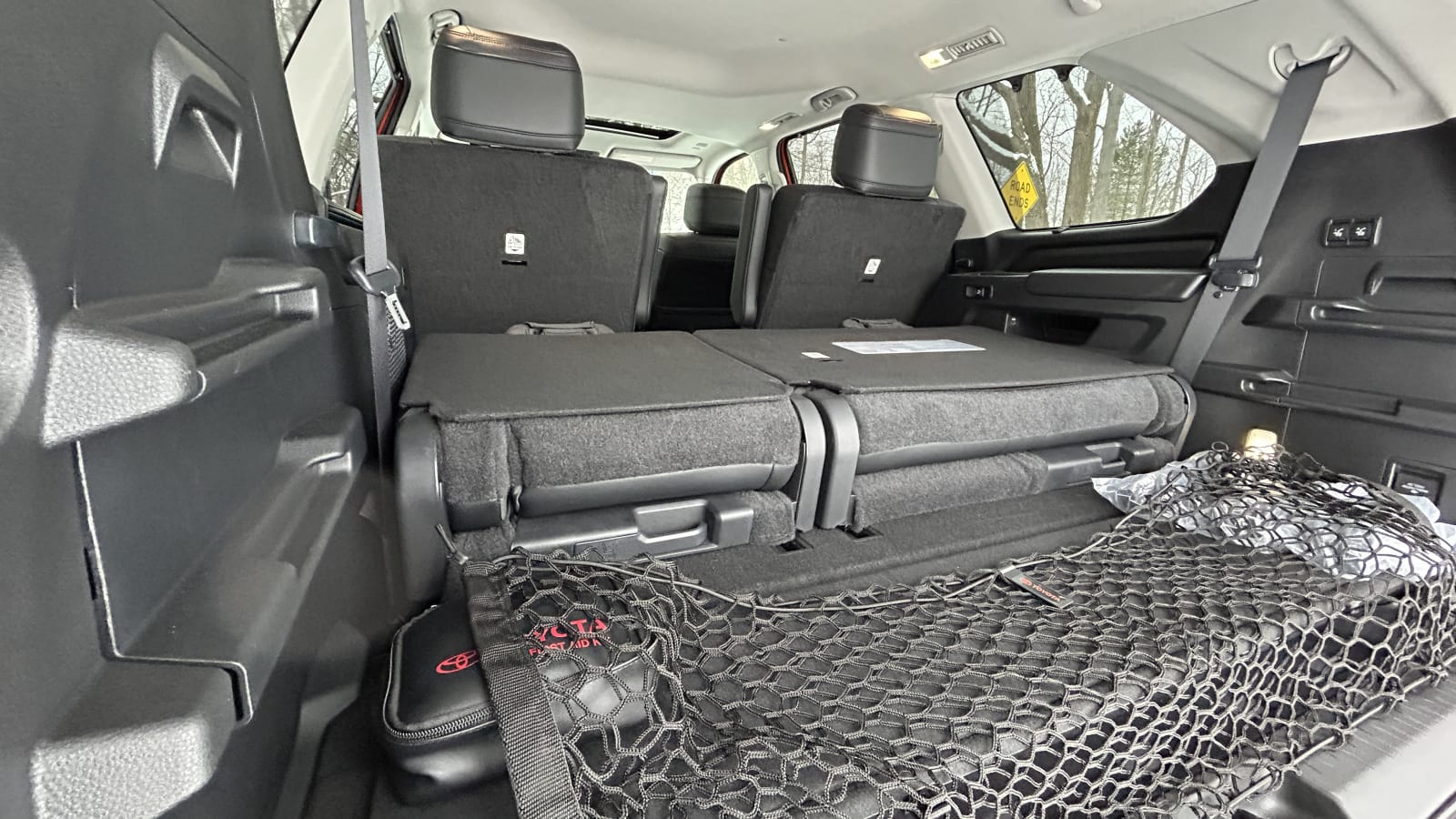
Yes, that is the cargo area for the Sequoia. You’ll notice that it has little mounting points on each side that let you place the floor at different heights. It’s a clever idea, but it’s also a workaround for a tiny space and a third row that doesn’t fold flat into the floor. The cause for that would be the hybrid system’s battery and the solid rear axle: Toyota simply couldn’t package those, plus the four-wheel-drive hardware, and make a real fold-flat third-row work. It’s the same issue GM’s previous full-size trucks suffered from, but rectified with the current generation and its independent rear end. The result is uncompetitive cargo space. Worse, third-row space is also below-average in a segment where even 6-footers can sit comfortably for hours in the back of an Expedition, Tahoe or Wagoneer.
For a brand-new platform and clean-sheet redesign, it’s surprising how much the Sequoia has gone backward in this area. Besides, for an SUV with a legitimate shot at being used as an overlanding vehicle, the compromised cargo space is even more annoying, as it will create challenges for folks packing it to the brim for extended stays away from civilization.
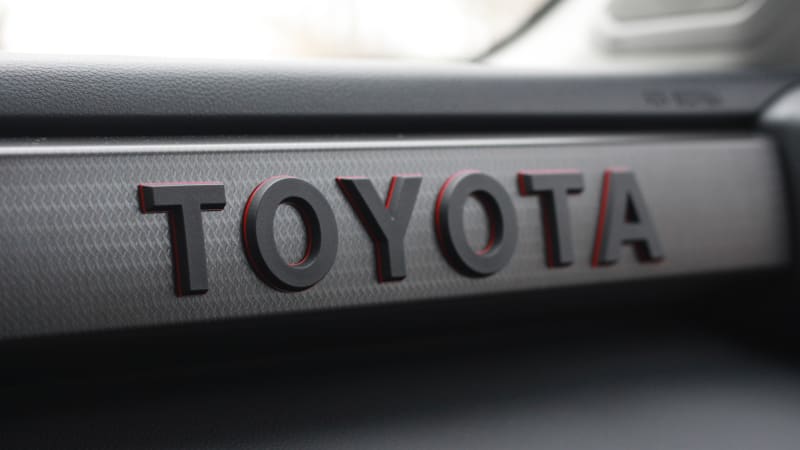
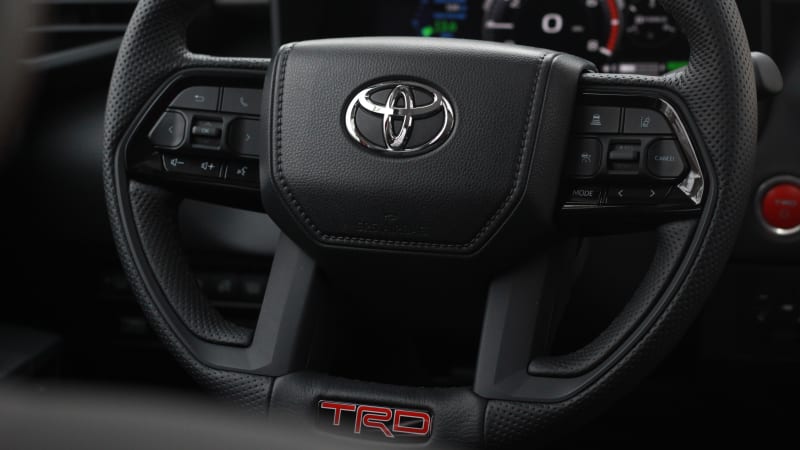
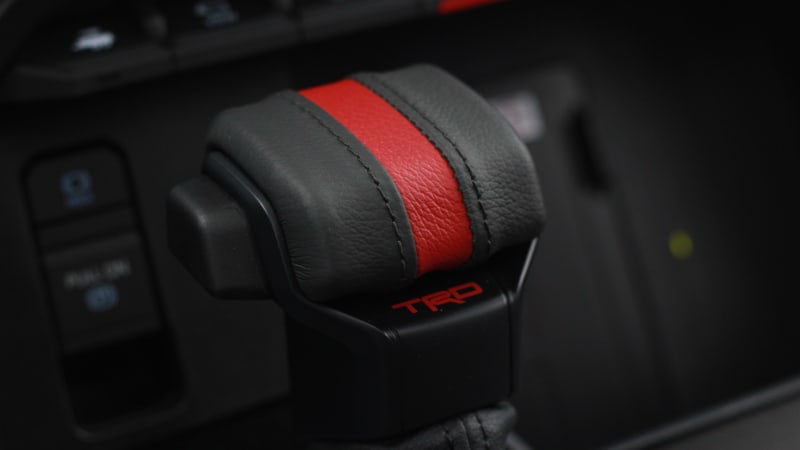
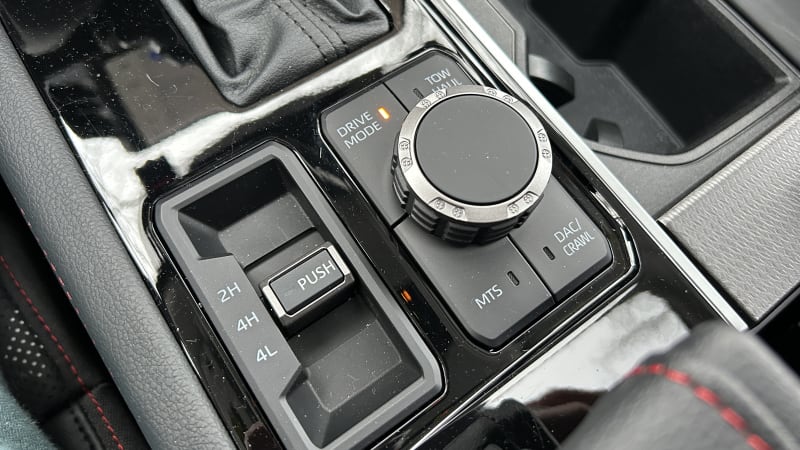
If you’re looking for positives, the new cabin from the second row on forward is lovely. The TRD Pro features unique camo-clad seats that, while a little much in red leather, look agreeably distinctive in black leather. The TRD Pro extras such as the red stitching everywhere, center mark on the steering wheel and giant “TOYOTA” spelled out on the passenger side dash all appropriately amp up the atmosphere. In general, the interior feels upscale and modern, as it should for 2023.
There are hard buttons for most vital controls, but the infotainment system lacks navigational shortcuts — even a “home” button with a landing screen would be a big improvement, especially when going back and forth between Apple CarPlay/Android Auto. The angle at which you interact with the screen is a little annoying, too, as it’s very close to the driver for having such a wide format screen, forcing you to make deliberate looks away from the road to operate it. Visibility in general for this new Sequoia is rather poor, especially if you spec the extendable towing mirrors. Combined with the massively chunky pillars, these mirrors create enormous forward blind spots that make parking and city driving stressful activities.
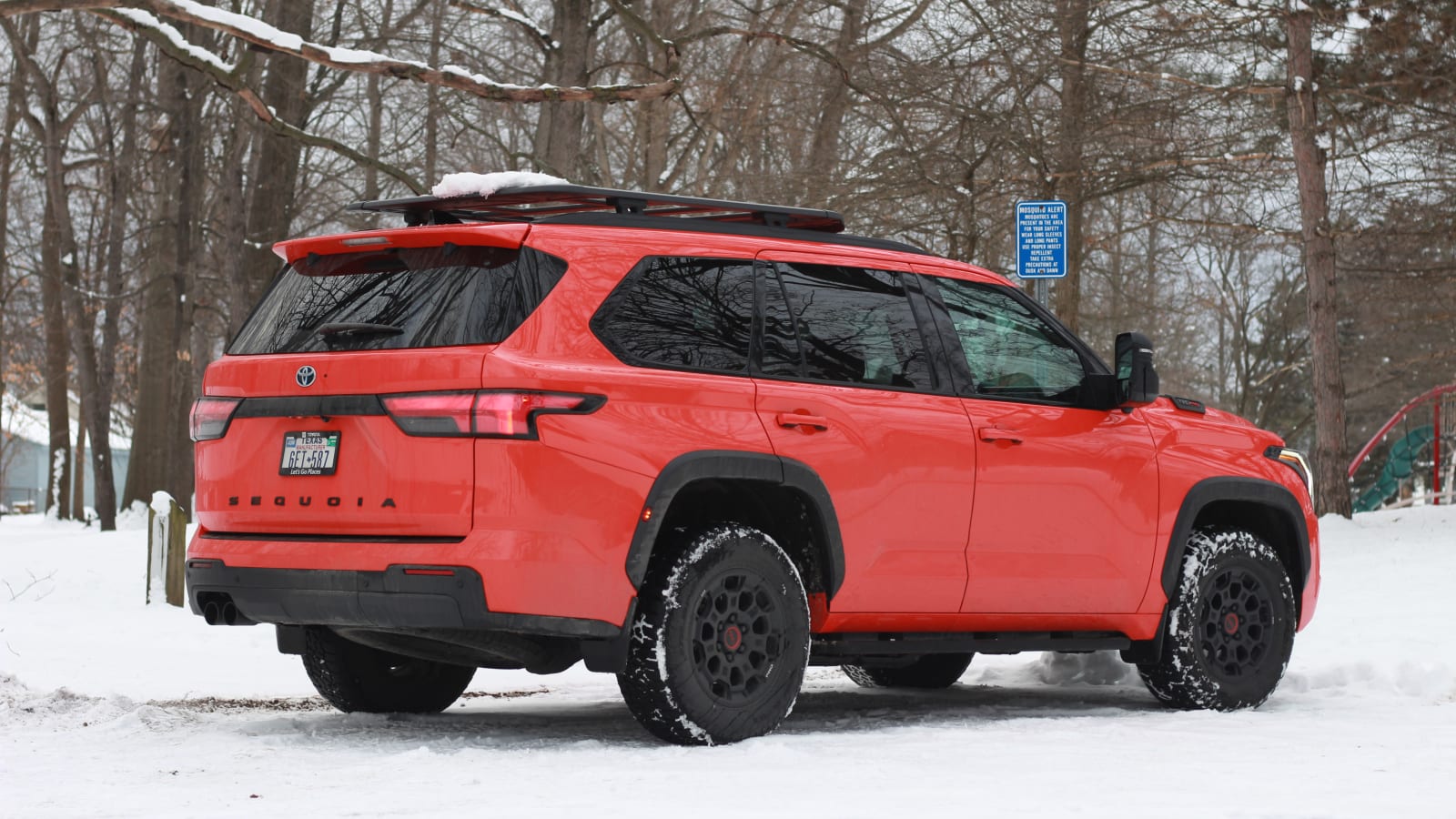
At $79,770 as tested, the Sequoia TRD Pro isn’t exactly a budget option. You can pick up a similarly equipped Chevrolet Tahoe Z71 for less, but a Ford Expedition Timberline will cost you a similar amount as the Toyota.
When it comes to body-on-frame, three-row vehicles that take wheeling seriously, the list above is short, and while we haven’t pitted them all against each other, the race could be a close one off-road. Both Ford’s and Chevy’s off-road entries put up slightly better ground clearance and approach/departure angle figures than the Sequoia TRD Pro, but none of these are true rock crawlers. The Sequoia’s big draws are the strong powertrain, stellar looks and those Fox shocks, while the others take big wins in overall interior packaging, ride comfort, the off-road numbers game and, potentially, real-world fuel economy. We’d rather live with either of the American SUVs on a daily basis, though, which is a little heartbreaking to say because we had high hopes for Toyota’s brand-new Sequoia that simply weren’t met.
Related video:
